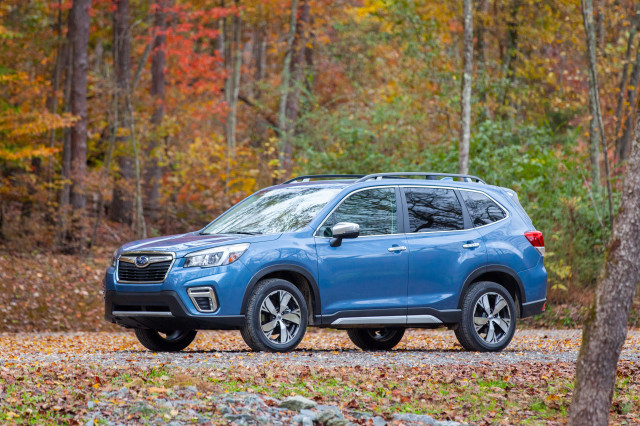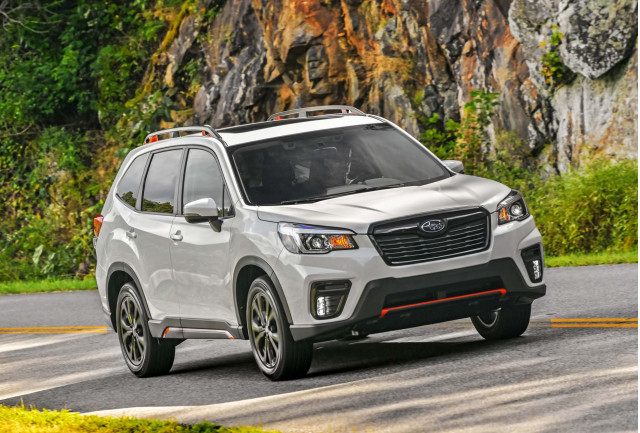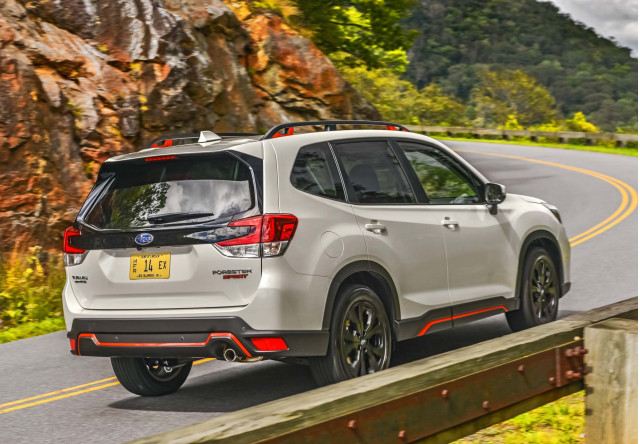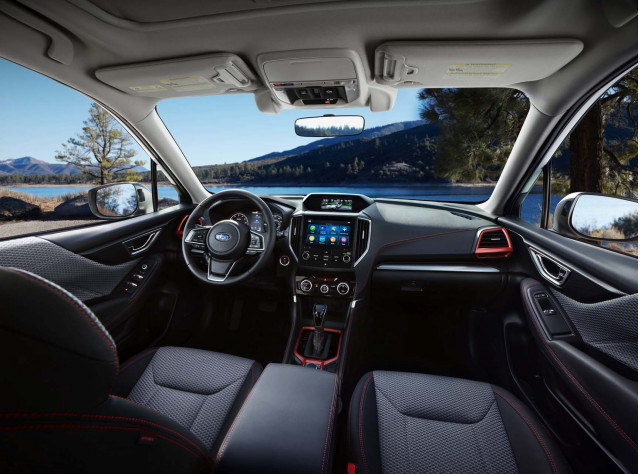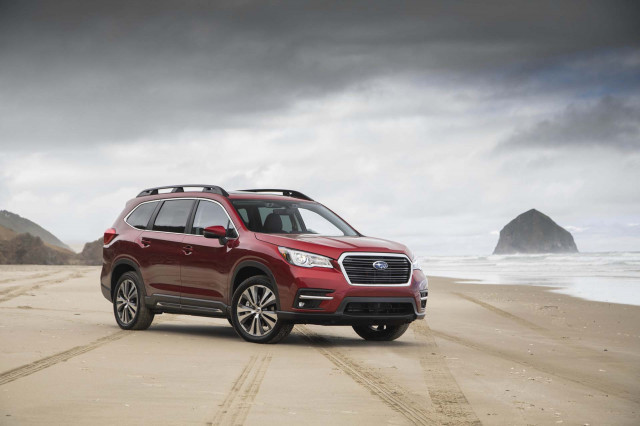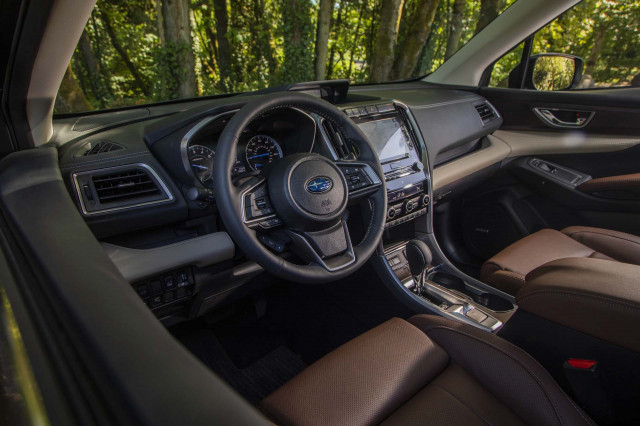2019 Subaru Forester
At first glance, the 2019 Subaru Forester and 2019 Subaru Ascent look like variations on the same theme—medium and large crossover SUVs.
There’s a lot that ties the two together, but there’s plenty that separates them and helps them appeal to different buyers.
It’s hard to say which model we prefer since the two Subarus cater to different buyers. The Forester rates 6.4 out of 10 points and we give the Ascent 6.8 points mostly on account of its more spacious interior. (Read more about how we rate cars.)
Admittedly, we named the 2019 Forester our Best Car To Buy 2019 for its serene nature, tremendous value, and spacious interior. The 2019 Ascent hits most of those points, too, with the added benefit—for some buyers—of a standard third row of seats.
Either way, both crossovers are low on compromises and high on reasons to add them to your shopping lists. The Ascent and Forester were both new for the 2019 model year with clean, crisp lines that won’t raise any eyebrows. The Forester Sport trim level adds some orange trim to spice things up, but it doesn’t really change the crossover SUV’s personality.
2019 Subaru Forester Sport
2019 Subaru Forester Sport
2019 Subaru Forester Sport
Inside, the crossovers share a convenient control layout and both come well-equipped for the money. The Forester’s interior isn’t dressy in base or Premium trims. Limited and especially the Touring trim pile on more pleasing surfaces and attractive leather, plus a bright 8.0-inch touchscreen in place of a 6.5-inch touchscreen in lower trims. Outboard passengers will find excellent space and a largely unobstructed view out, while even the second row’s middle-seat passenger has decent leg room. The Forester’s extra-wide tailgate—power on many versions—opens to reveal as much as 76 cubic feet of luggage-swallowing volume with the rear seats folded.
The Ascent shares the Forester’s good infotainment software. Both crossover SUVs come standard with Apple CarPlay and Android Auto compatibility plus Bluetooth connectivity and USB ports (four in the Forester and seven in the Ascent). With its longer wheelbase and wider body, the Ascent does an even better job of handling passengers in its front two rows. The standard third row is easy to access with the second row scooted forward. Ascent buyers have a choice between a three-seat bench or a pair of captain’s chairs with a narrow pass-through for no extra cost.
Where the Ascent misses is in its relatively compromised rearward vision. Big roof pillars and hefty head rests mean that drivers need to rely more on mirrors,optional parking sensors, and surround-view cameras than in the Forester.
Subaru Forester and Subaru Ascent performance, safety
Underhood, the Ascent’s 2.4-liter turbo-4 provides ample acceleration. It mates well with the standard continuously variable transmission, although we think an extra layer or two of sound deadening would help its cause. The Forester uses a 2.5-liter inline-4 that’s larger but lacks a turbo. Even though its 182-horsepower rating isn’t burdened by as much weight as the Ascent, the Forester won’t win many drag races.
2019 Subaru Ascent first drive
2019 Subaru Ascent first drive
2019 Subaru Ascent
Fuel economy tips in the Forester’s favor, too. It’s rated at a miserly 29 mpg combined compared to 22 or 23 mpg combined depending on the Ascent trim level.
Both vehicles handle competently and confidently, albeit without much of the driving joy Subaru has pumped into its sportier models. On either, sticking with lower trim levels means smaller wheels wrapped by tires with taller sidewalls that absorb bumps better.
Subaru’s crossover SUVs are formidable four-wheelers, at least compared to most competitors. The Ascent and Forester boast 8.7 inches of running ground clearance, standard all-wheel drive, and most versions have an X-Mode traction control setting designed for use in dirt, mud, and snow.
We think both crossovers are extra-safe choices. They’ve done well in crash tests and come standard with a suite of collision-avoidance technologies including automatic emergency braking, adaptive cruise control, and active lane control. Blind-spot monitors and rear cross-traffic alerts are optional.
In terms of value, the Forester’s the clear-cut winner. A well-equipped Forester Premium costs less than $30,000. You won’t find an Ascent for less than $33,000 and the Premium trim level with a power liftgate costs around $36,600.
If seating more than five isn’t essential, we say stick with the right-priced Forester.
Summary
Styling
Performance
Comfort & Quality
Safety
Features
Fuel Economy
MSRP
Invoice
Fuel Economy – Combined City and Highway
Engine
Drivetrain
Source: Read Full Article

